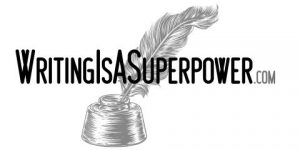
Persuasive writing is an act of seduction. It’s a pleasurable and engaging experience for the reader which moves them to make a purchase, take an action or accept an idea. The seduction begins with a captivating headline. The Four U’s can help.
Developed by legendary copywriter Michael Masterson, the Four U’s, aka 4 U’s, stand for Urgent, Unique, Ultra-specific and Useful. When used to write headlines and subject lines, the 4 U’s capture the reader’s attention and entice them to continue reading.
In this article, you’ll discover how to use the Four U’s to create compelling headlines for ad copy, blog content, emails, videos or any message where you must capture the reader’s attention.
What Are the Four U’s in Copywriting?
The headline or subject line of an ad, email, blog post or video is its most crucial element. The Four U’s can help you capture and hold your reader or viewer’s attention.
Although I use the words ad or ad copy in this article when referring to content, the principle of the Four U’s is the same for any headline, sub-headline or subject line you may need.
The headline or subject line is your invitation to the reader to engage with your copy or content.
The Four U’s copywriting formula is: Urgent, Unique, Ultra-specific and Useful.
Urgent.
Urgency inspires the reader to act immediately rather than later.
When you use a time element in your headline, you create a sense of urgency. For example; “Earn $100 Today” has greater urgency than “Earn $100.”
Time-limited special offers also create urgency, such as a discount or a bonus.
Unique.
Uniqueness in headlines is created when it states something new, or it states the familiar in a new way.
For example, “Have Younger Skin” is a rather dull headline, but “Have Younger Skin at Any Age” is unique.
Ultra-Specific.
When a headline is specific, it instantly communicates to the reader a clear mental image packed with emotion. For example, “What to Never Tell Your Wife,” and “How to Beat a Speeding Ticket Every Time
Useful.
A useful headline capitalizes on the reader’s self-interest by offering a clear benefit. For example, “Eat Comfort Foods and Lose Weight.”
The benefit is weight loss.
How to Use the Four U’s in a Headline.
After you’ve written your headline, determine how strong it is when compared to the Four U’s? Use a scale of 1 to 4 and rate how it stands up to each of the Four U’s.
Rarely does a headline score a 3 or 4 on every U. However, if your headline doesn’t rank 3 or higher on at least 3 of the U’s, it could be stronger. You should probably rewrite it.
While it is true that weak headlines can be profitable, they will never be as effective as a strong headline. Weak headlines leave money on the table.
Taking the time to write a strong headline can substantially boost sales and engagement.
Rate the headline against the Four U’s. Then rewrite it until at least two and, ideally, three or four of the U’s are raised by a point.
The Four U’s are an easy way to increase your effectiveness as a persuasive writer.
Rating how your headline measures up to the Four U’s is a subjective exercise. It’s your best guess. Don’t overthink it.

Tips for Writing Headlines.
- Does the headline grab the reader?
- Does the headline promise a benefit for reading the content?
- Can the headline be stated in a new way?
- Does the headline get the point across quickly and clearly?
- Is the headline as specific as possible?
- Does the headline logically relate to the content, product or service offered? Avoid click-bait headlines that are inconsistent with the rest of the copy
- In sales copy, is the headline consistent with visuals? Do they work together to convey a complete selling concept?
- Does the headline create a sense of curiosity in the reader and draw them into reading the content?
- Is the headline focused toward a specific audience?
- In selling, is the brand name or advertiser’s name mentioned in the headline?
- Avoid headlines that do not mean anything until the reader goes through the content. Known as “blind headlines,” these fail all points of the Four U’s.
- Don’t try to be witty or cute. Irrelevant wordplay, gimmicks and puns may be amusing, but they are not effective in engaging a reader.
- Avoid negatives. The mind cannot dwell on the reverse of an idea. It’s the old try not to imagine a pink elephant phenomenon.
Negatives in Headlines.
When someone says, “Don’t look,” what happens? We look!
It’s the same with persuasive writing. When a label states “No fat,” we see fat.
A more positive and persuasive way to state the same thing is to write, “Fat-Free.”
3 Approaches to Writing Headlines.
Some writers will spend most of their time brainstorming headline ideas before they write the first word of content or copy.
Other writers will write the content or copy first and then write the headline.
Another approach to writing headlines is use headlines from a swipe file as inspiration.
How to Write a Headline.
When it comes to writing headlines, you must have a plan.
If you’re part of a marketing team, you might consult with other team members for headline ideas. However, as the writer, you’re responsible for the results produced by your writing.
You need your own system to independently create compelling headlines that get the job done.
While every writer will develop their own approach to writing headlines, it is critical to have a consistent approach.
Without a routine process for writing headlines, a writer will stumble and hesitate, and ultimately produce inferior work.
A haphazard, seat of the pants approach can make writing more difficult and time-consuming than it needs to be.
How to Write a Headline Using the Four U’s.
Here’s a reliable approach to writing headlines.
Before you start, ask yourself three questions.
- Who is your customer or reader?
- What are the most essential features of your product or what is the point you are trying to convey?
- Why would the customer want to buy the product or read your content? What is the most valuable benefit you’re offering?
Once you understand why your customer would buy your product, or why you reader would engage in your content, you know the selling proposition to feature in your headline.
From that point, crafting a compelling headline is merely a matter stating the benefit clearly in a way that grabs the reader’s attention.
The objective of this method for writing headlines is to start with your message, the idea you want your headline to communicate.
You message might be your selling proposition, the benefit of your product, or specific information.
The point is start with the message and then create a headline that does the best job of getting that message across.
When you think you have your best headline, how does it measure up against the Four U’s Formula? Can you make it more Urgent, Unique, Ultra-specific, and Useful?

How to Generate Headline Ideas.
You might try a “How to” headline or a question headline and the reason why.
Now is the time to brainstorm headline ideas if you’re stuck. An added benefit of brainstorming ideas is you’ll create dozens of useful headlines, some better than others.
Pick the best for the headline and use the others for subheaders.
Sometimes you can find headline ideas in the body of similar or competing content and ads.
Another technique for generating headline ideas is to list words that relate to the product you are promoting or your content.
After you have a list of a few dozen words, mix and match. It’s helpful to put one word on an index card.
Play with the order. This is a powerful method for finding new language patterns that can be used to create a unique headline.
When You Can’t Think of a Good Headline.
When you’re stumped and can’t think of a good headline, just relax. Getting stumped is part of the writing process, go with it.
Maybe your inner creative genius is out to lunch. She’ll come back when you aren’t trying so hard. Take a break.
Forget about headlines for the moment. Work on the body of your copy or content. As you work on the body, ideas will come to you, jot them down to revisit later.
Or, you may want to step away from your writing project and do something entirely different. Often physical activity is a great way to replenish your creative juices.
Try walking, exercise or cleaning the house. Sometimes when we try too hard or push ourselves to perfection, we lose sight of the big picture and miss the best parts.
Stepping away and doing something that does not require thought or creativity allows you to restore the stuff of butterfly wings, that mystical inner source of all things magical.
A Word of Warning About the Four U’s.
Don’t let the Four U’s become a straitjacket. The formula is meant to enhance your creativity, not replace it.
The message you want to communicate in your headline is the foundation. Let the Four U’s formula help you refine it, but avoid torturing your headline just to make it fit.
Instead, use the Four U’s to focus your creativity and to find the best ideas for your copy and content.
Writing headlines is a creative process. It’s a puzzle where you must first dream the pieces into existence.
The Best Copywriting Guide.
Copywriting is a simple and mostly mechanical process. To learn everything you need to know about copywriting, read The Best Copywriting Guide.
The Easiest Writing Career?
If you’re looking for a way to support yourself as a writer, I recommend blogging.
It’s easy to begin, there’s no bosses or clients to deal with and you can do it from home. Or, anywhere there’s an internet connection.
And, best of all, your income potential is unlimited.
To learn more, read The Easiest Writing Career.

